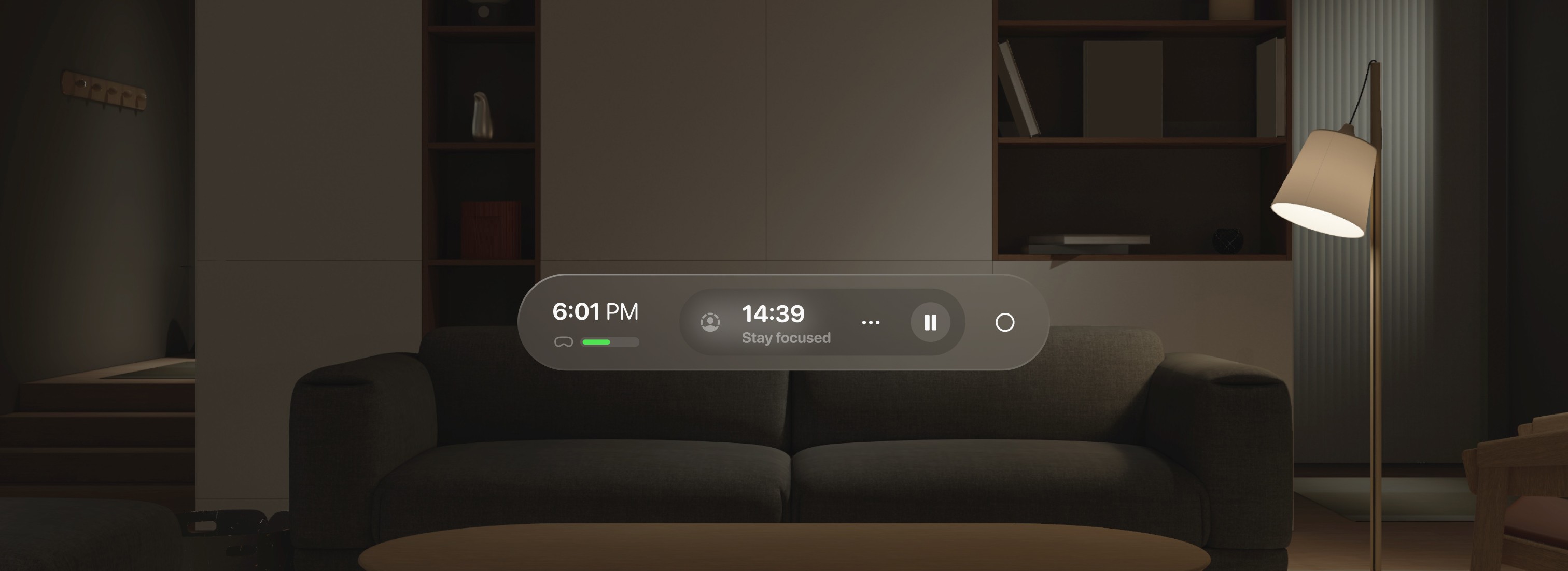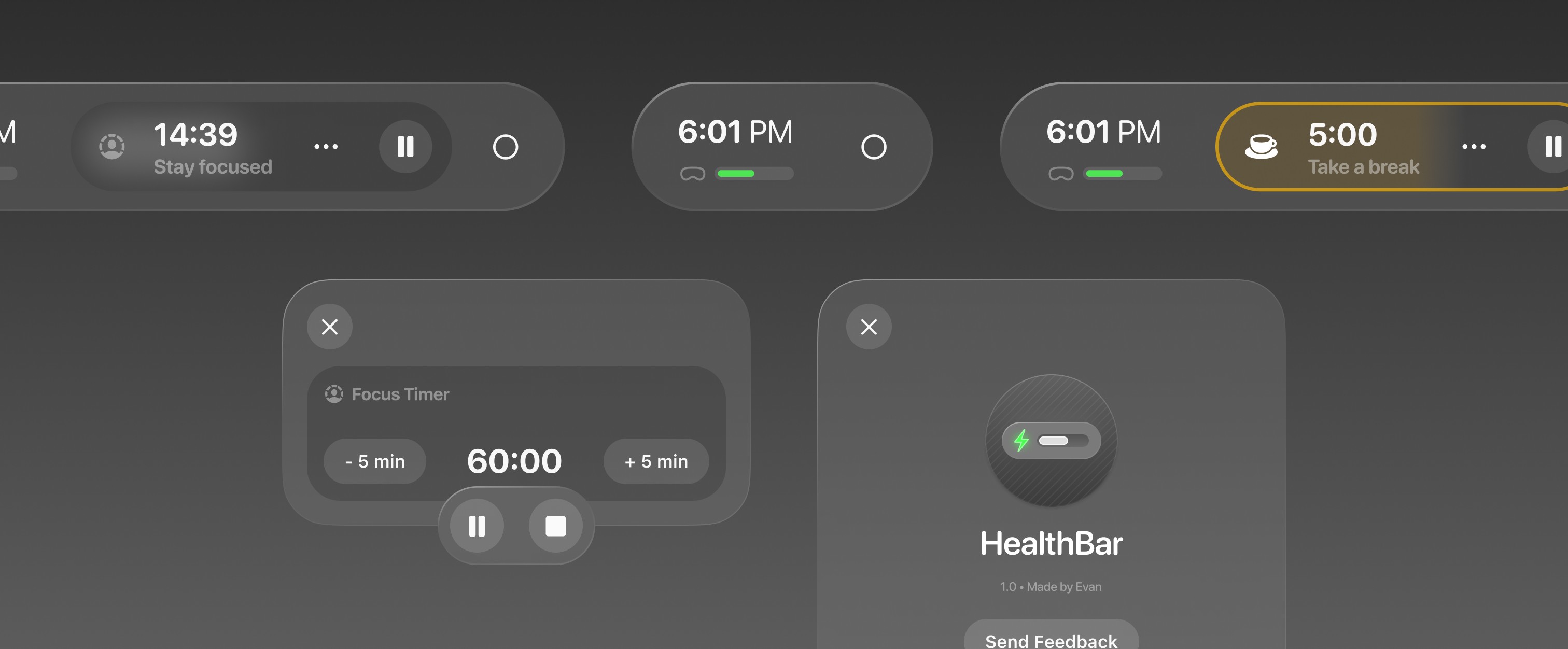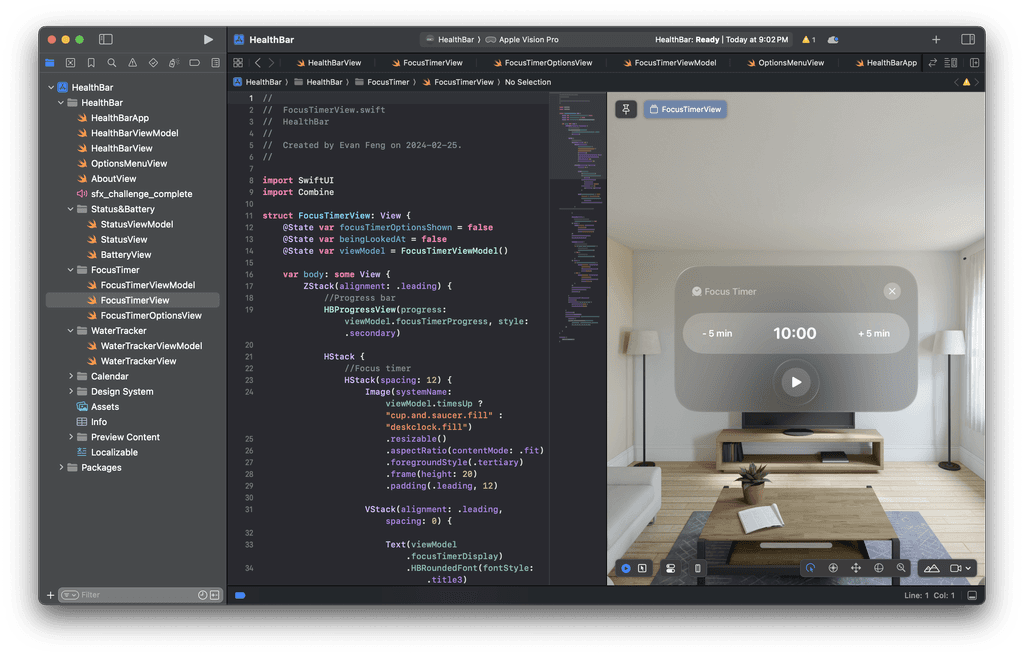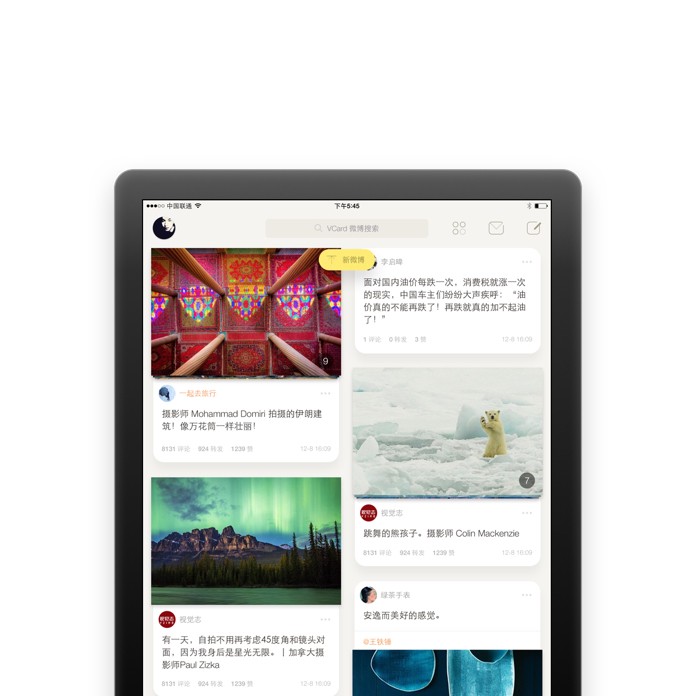
HealthBar
2023 - Design + Development
With spatial computing, human-computer interactions are entering a new dimension with endless possibilities. This experimental practice is my first step toward understanding the unique challenges and opportunities of designing for this medium. By getting hands-on and seeing things in action, I aimed to explore whether there’s anything new to discover, hoping to spark inspiration for future design approaches.
HealthBar is a utility that helps people track their session time in the headset and take breaks. It’s designed to be placed in their space alongside other apps. I designed a simple, responsive UI, which made this project an ideal playground for me to start exploring spatial UI with SwiftUI.
Materials. Depth. Scale.
Using SwiftUI to design and prototype beyond the traditional canvas.
Designing interfaces in 3D space can be challenging with traditional tools like Figma, so I leveraged SwiftUI to work with materials, depth, and scale. A key aspect of designing for this medium is ensuring that UI elements are scaled correctly and that the materials feel natural and responsive in a 3D space. Adding depth to the UI also introduces a new dimension for creating visual hierarchy. These considerations allow UI elements to blend seamlessly into the physical environment, and SwiftUI enabled me to rapidly design and prototype.
Interfaces become objects in your space.
Will industrial design and architecture become the new orders in human interfaces?
This simple project has been an exciting learning journey for me. As interfaces move beyond the confines of screens, they begin to behave like objects in our physical environment. This shift calls for a new approach to design, where principles from industrial design and architecture might come into play. Just as physical products are crafted with attention to form, material, and spatial context, digital interfaces in 3D spaces should be thoughtfully designed to co-exist with their surroundings. This evolution blurs the line between technology and environment, suggesting that industrial design and architecture may become additional layers in human-computer interaction design.
Related Links




